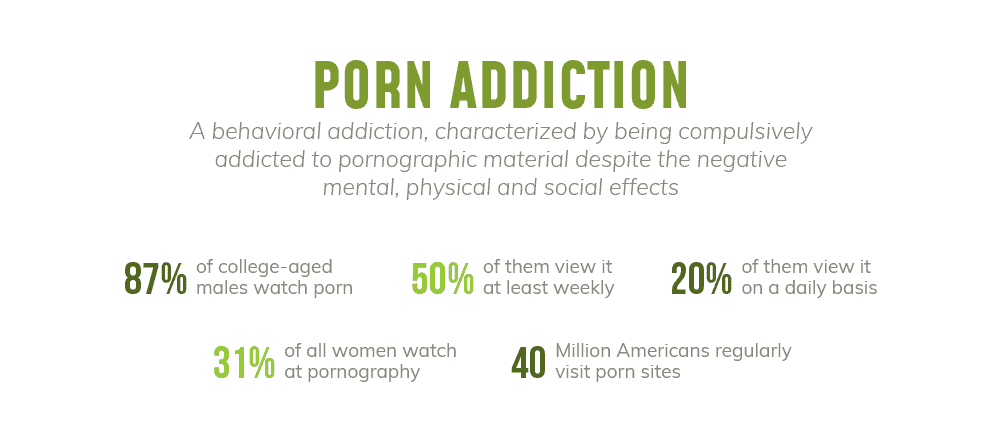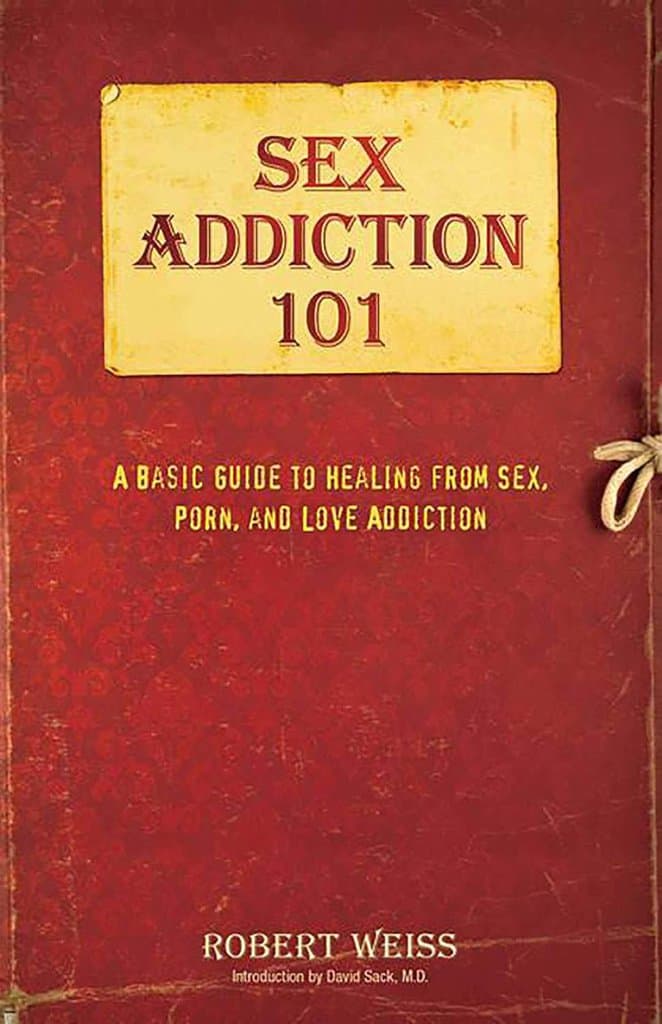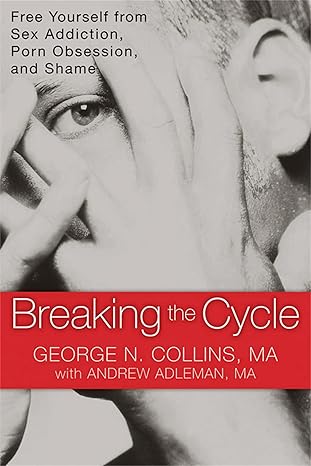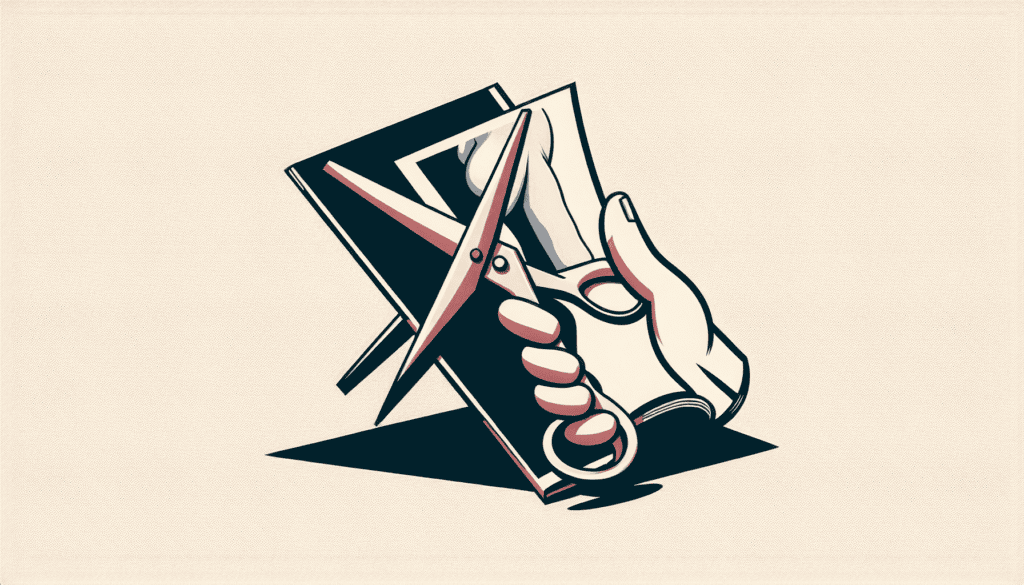In recent years, the topic of porn addiction has garnered increasing concern and attention. This modern affliction, often shrouded in stigma and misunderstanding, is becoming a significant issue impacting individuals and society.
Porn addiction, characterized by an overwhelming and compulsive consumption of pornographic material, can have severe repercussions on mental health, relationships, and overall well-being. Understanding what is porn addiction, its symptoms and its far-reaching impacts is crucial in addressing this growing problem effectively.

Societal attitudes towards pornography have shifted dramatically over the decades, making it more accessible than ever. This accessibility, coupled with the anonymity of internet use, has contributed to the rise in porn addiction cases.
Statistics reveal alarming trends, with a significant portion of the population reporting struggles with controlling their consumption of pornography. As awareness grows, it becomes essential to delve into what constitutes porn addiction, explore its symptoms, and understand its broader implications on individuals and society.
In this article, we will explore the definition, symptoms, and impacts of porn addiction. We will shed light on this critical issue and offer insights into ways to address it.
What is Porn Addiction?
Definition of Porn Addiction
Porn addiction is a compulsive behavior characterized by an overwhelming urge to consume pornographic material, despite negative consequences.
Experts define it as a form of behavioral addiction where the individual becomes dependent on porn to achieve pleasure or relief from negative emotions. This dependency often mirrors substance addiction, leading to similar patterns of escalation and compulsion.
Dr. Valerie Voon, a renowned neuroscientist at the University of Cambridge, describes porn addiction as “a compulsive use of pornography that interferes with daily life and relationships.”
Similarly, Dr. Patrick Carnes, a pioneer in the field of sex addiction, defines it as “an escalating pattern of pornography consumption that leads to a significant distress or impairment.”
Behaviors indicative of porn addiction include spending an excessive amount of time watching pornography, neglecting responsibilities or activities, and experiencing distress or irritability when unable to access porn.
This addiction can manifest similarly to substance abuse, where the individual requires increasingly explicit content to achieve the same level of satisfaction, leading to a cycle of escalation.
Porn Addiction Meaning
Beyond the clinical definition, the meaning of porn addiction encompasses its broader implications on an individual’s life. It affects various aspects, including relationships, work performance, and mental health. Individuals with porn addiction often experience feelings of guilt, shame, and isolation, which can exacerbate the condition and create a vicious cycle of dependency.
The impact on relationships can be profound, as partners may feel neglected, betrayed, or disconnected due to the addict’s preoccupation with pornography. This addiction can also impair work performance and productivity, as individuals may spend significant time viewing porn at the expense of their professional responsibilities. Moreover, the mental health implications are severe, with increased risks of depression, anxiety, and low self-esteem.
Understanding porn addiction in this comprehensive manner highlights the necessity of addressing not just the behavior itself but also the underlying issues and the broader consequences on an individual’s overall well-being.
Signs and Symptoms
Behavioral Signs
Recognizing the behavioral signs of porn addiction is crucial for early intervention and treatment. Common behavioral signs include an increased preoccupation with pornography, leading individuals to spend excessive amounts of time viewing explicit content. They often prioritize porn consumption over important daily activities and responsibilities, such as work, school, or family time. This results in neglecting relationships and social obligations.
Individuals may also experience difficulty controlling their consumption, often watching porn even when they do not intend to or when it interferes with their daily life. This compulsive behavior escalates over time, requiring more explicit content to achieve the same level of satisfaction.
The escalation levels of porn addiction can be categorized as follows:
- Initial Use: Occasional consumption of pornographic content, often out of curiosity or boredom.
- Increased Use: More frequent viewing, often used as a coping mechanism for stress or emotional distress.
- Preoccupation: Persistent thoughts about pornography, planning times to view it, and experiencing cravings.
- Compulsion: Inability to control the urge to watch porn, leading to prolonged sessions and neglect of daily responsibilities.
- Escalation: Seeking increasingly explicit and extreme content to achieve the same level of arousal and satisfaction. This stage often involves spending significant time finding new material and can lead to viewing content that the individual previously found disturbing or unacceptable.
- Desensitization: Decreased sensitivity to the effects of pornography, requiring even more graphic and novel content to achieve arousal.
- Dysfunction: Severe interference with personal, social, and professional life, leading to significant distress and potential mental health issues.
People struggling with porn addiction may also attempt to hide their behavior, lying about the amount of time spent on porn or deleting browser histories to avoid detection.
Psychological Symptoms
The psychological impacts of porn addiction can be profound and long-lasting. Individuals may experience intense feelings of guilt, shame, and self-loathing, which can exacerbate the addiction and create a cycle of dependency.
Anxiety and depression are common among those struggling with porn addiction, as the constant consumption of explicit material can lead to distorted views of sex and relationships, further isolating the individual.
Studies show that prolonged exposure to pornography can alter brain chemistry, affecting areas related to motivation, reward, and pleasure.
Dr. Norman Doidge, a psychiatrist and psychoanalyst, notes that “pornography can hijack the brain’s reward system, leading to changes that are similar to those seen in drug addiction.” This can result in decreased satisfaction with real-life sexual experiences and relationships, further entrenching the individual in their addictive behaviors.
Understanding these signs and symptoms is essential for recognizing porn addiction and seeking appropriate help. Early intervention can prevent the escalation of these behaviors and mitigate the psychological impacts, promoting healthier coping mechanisms and recovery.
More on Signs of porn addiction (and its symptoms), read here.
Causes and Risk Factors
Psychological Factors
Several psychological factors contribute to the development of porn addiction. Underlying mental health issues, such as depression, anxiety, and low self-esteem, often play a significant role.
Individuals may turn to pornography as a means of escapism or self-medication to cope with these emotional struggles. The temporary relief or pleasure obtained from viewing porn can reinforce its use, creating a cycle of dependency.

Photo Credit: Aspire Wellness in California
Stress and trauma also contribute to the psychological causes of porn addiction. People who have experienced traumatic events or chronic stress may use pornography to numb their emotions or distract themselves from their problems. This coping mechanism can lead to an increased reliance on porn to manage emotional pain, further entrenching the addiction.
Social and Environmental Factors
Social and environmental factors also significantly influence the risk of developing porn addiction. Social isolation and loneliness can drive individuals to seek comfort in pornography, leading to habitual use. Easy access to internet pornography, particularly in the digital age, exacerbates this issue, making it easier for individuals to develop addictive behaviors.
Societal attitudes towards sex and pornography play a crucial role. In cultures where pornography consumption is normalized or even encouraged, the risk of developing an addiction increases.
For example, countries like Japan and Germany have more permissive attitudes towards pornography, with adult material being widely available and culturally accepted. In these societies, individuals may feel less inhibited about their consumption of pornographic content, leading to higher instances of addiction.
Research indicates that environments with high levels of stress, such as demanding workplaces or unstable family dynamics, can increase the likelihood of turning to pornography as a coping mechanism.

Credit: Right Choice Recovery
A study published in Psychology Today highlights that chronic stress, such as that experienced in high-pressure jobs or unstable home environments, can significantly elevate the risk of addiction.
The self-medication theory suggests that individuals use substances, including pornography, to cope with the tension associated with life stressors or to relieve symptoms of anxiety and depression (Psychology Today) (BioMed Central).
Understanding these psychological and social factors is essential for developing effective prevention and treatment strategies for porn addiction. Recognizing the multifaceted nature of this addiction allows for a more comprehensive approach to support and recovery.
Conclusion
Porn addiction is a serious and growing concern that affects individuals’ mental health, relationships, and overall well-being. Understanding this addiction involves recognizing its definition, identifying its behavioral and psychological symptoms, and exploring its causes and risk factors.
Behavioral signs such as excessive preoccupation with pornography, compulsive consumption, and seeking more explicit content highlight the severity of the addiction. Psychological symptoms, including guilt, shame, and anxiety, further exacerbate the issue.
The causes of porn addiction are multifaceted, involving psychological factors such as depression, anxiety, and low self-esteem, as well as social and environmental factors like social isolation, easy access to internet pornography, and societal attitudes towards pornography.
Stressful environments, both in personal and professional settings, significantly contribute to the risk of developing this addiction, as individuals often turn to pornography as a coping mechanism for emotional pain and stress.
Steps Towards Recovery
Addressing porn addiction requires comprehensive strategies that include awareness, education, and support. If you or someone you know struggles with porn addiction, seeking help is crucial.
Various resources are available, including support groups, therapy options, and hotlines that provide assistance and guidance. Early intervention and open conversations about this addiction can promote recovery and healthier coping mechanisms.
For more detailed information and resources, visit our article on breaking the chains of porn addiction. Taking the first step towards recovery is vital, and understanding the nature of porn addiction is the foundation for overcoming it.








![Your Brain on Porn [Book Review]](https://christpulse.com/wp-content/uploads/2024/09/611TBbtqJYL._SL1360_-663x1024.jpg)




